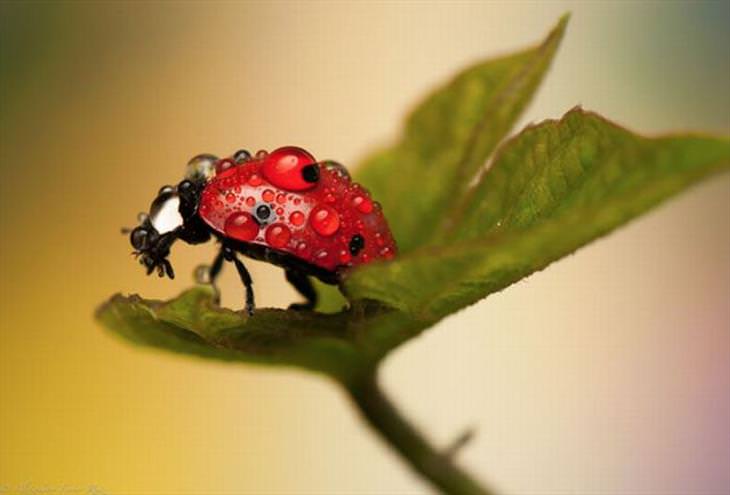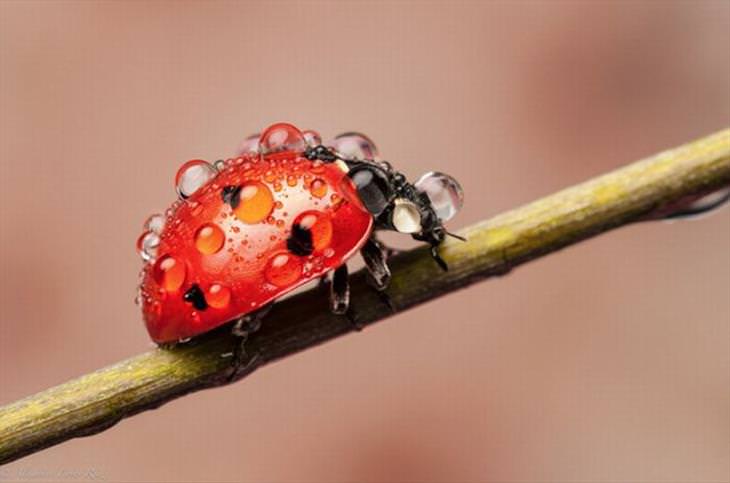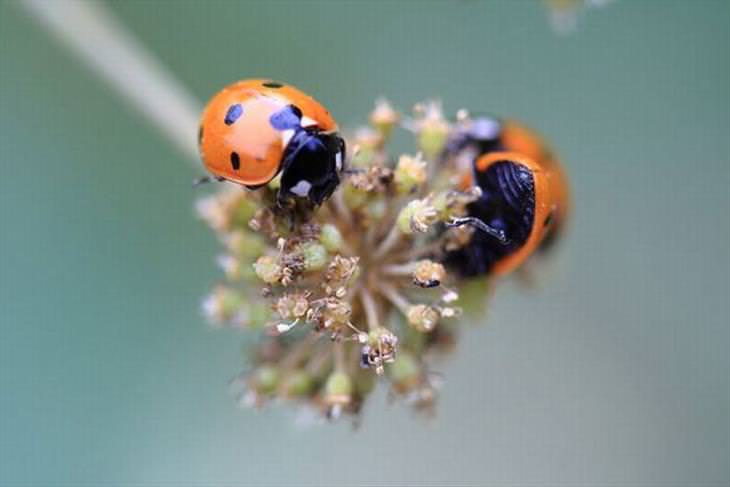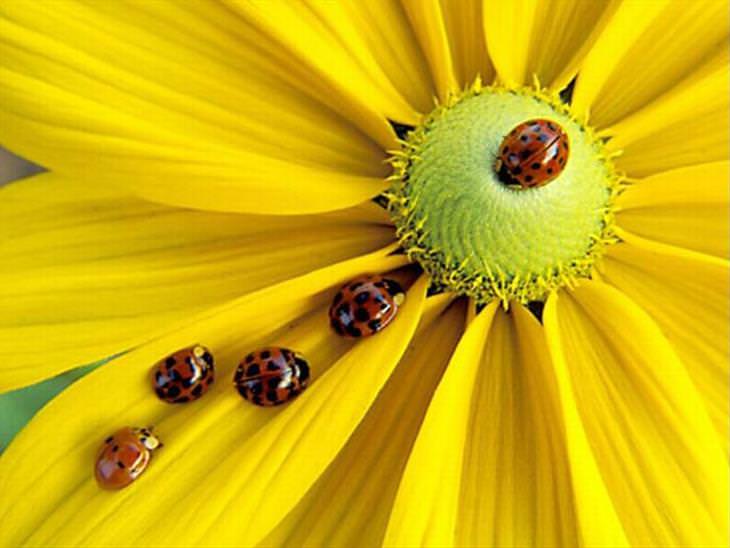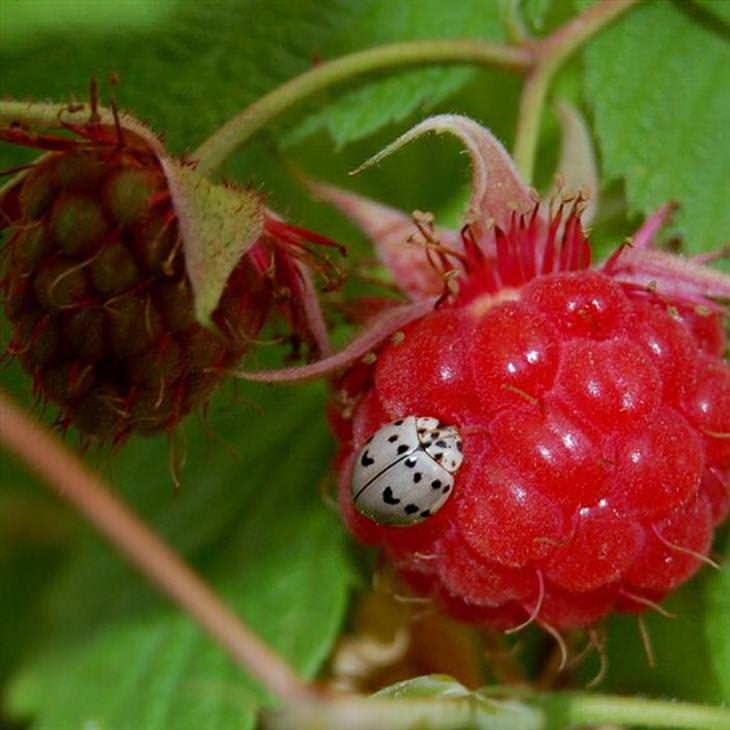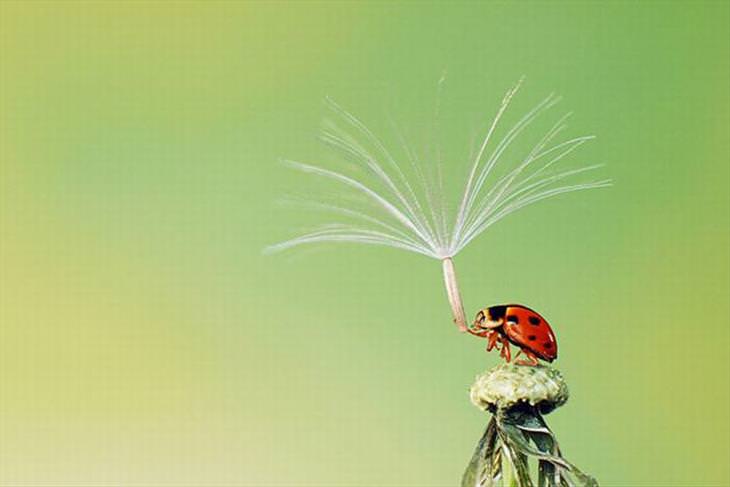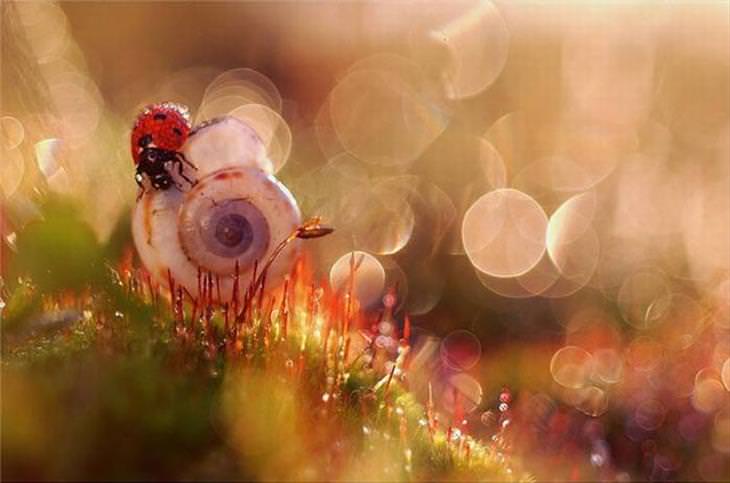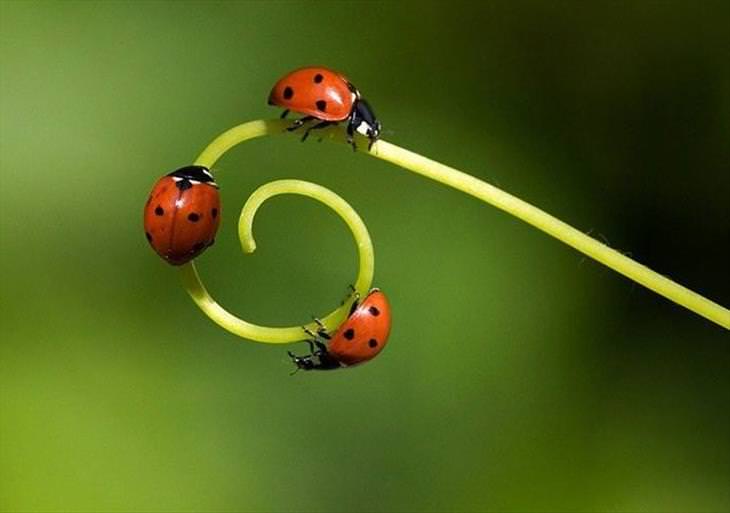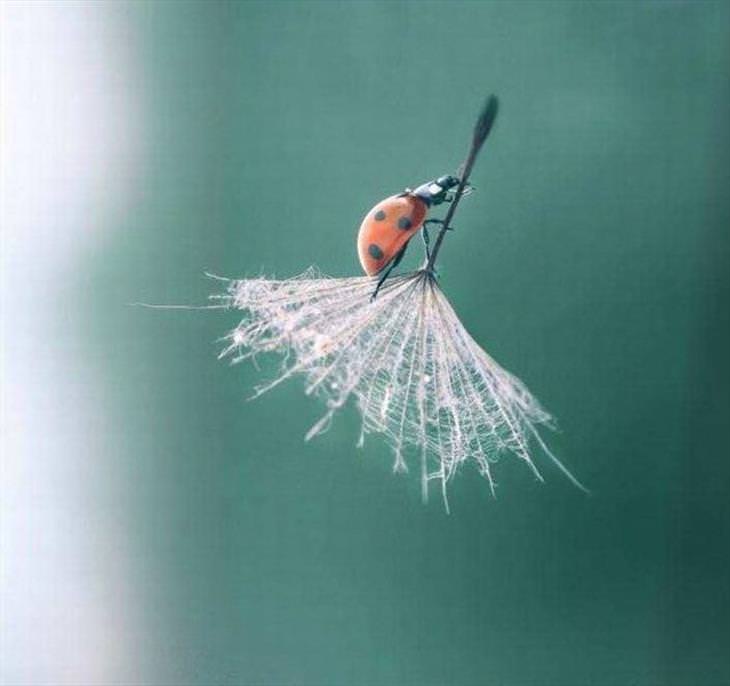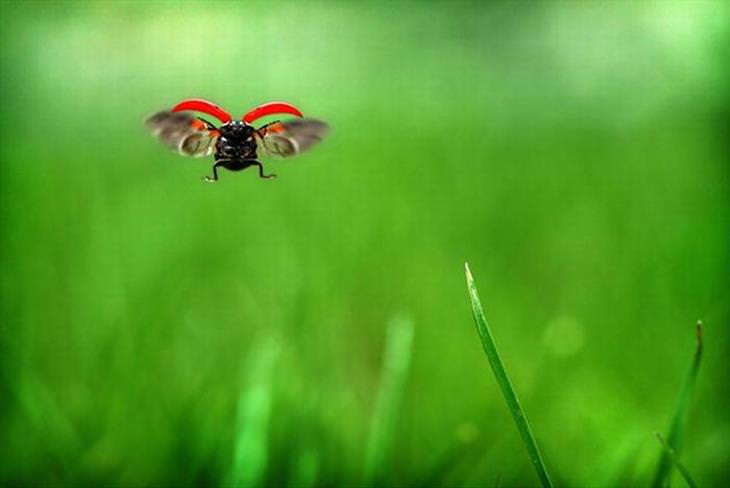
Whether we call them ladybugs, ladybeetles, or even ladybirds, these pretty, winged insects are known and loved by everyone. With their familiar, delicate wings, covered with a varying array of patterns of red - or yellow or orange - and black spots, these tiny members of the Coccinellidae family of beetles are sized between a minuscule 0.03 and 0.7 inches. I always feel a childish wonder and thrill when one lands nearby, especially if I can coax her on to my hand.
So which is your favorite beetle?
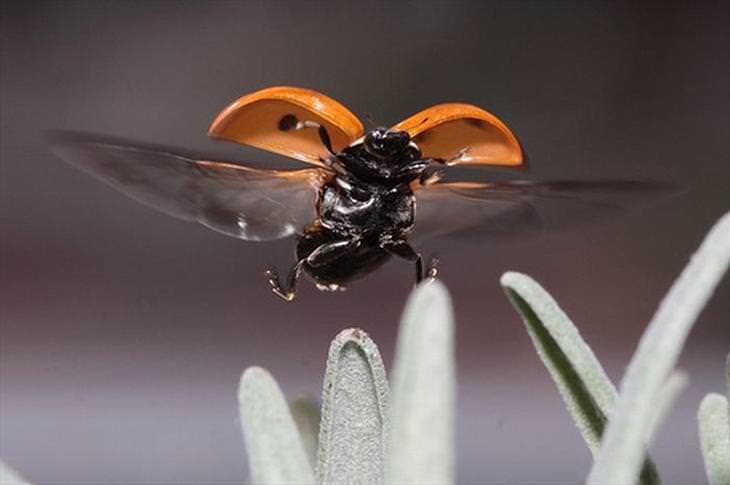


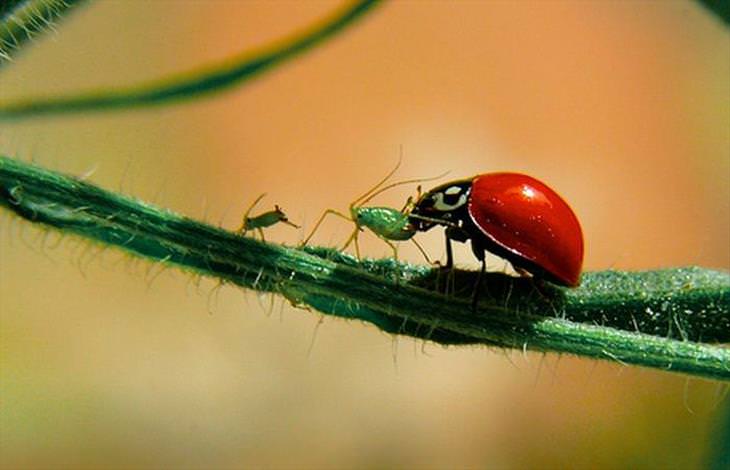
A pretty lady out of the bath, caught without a towel
